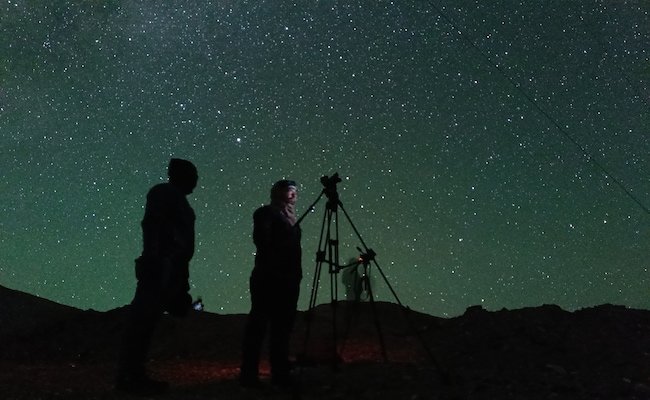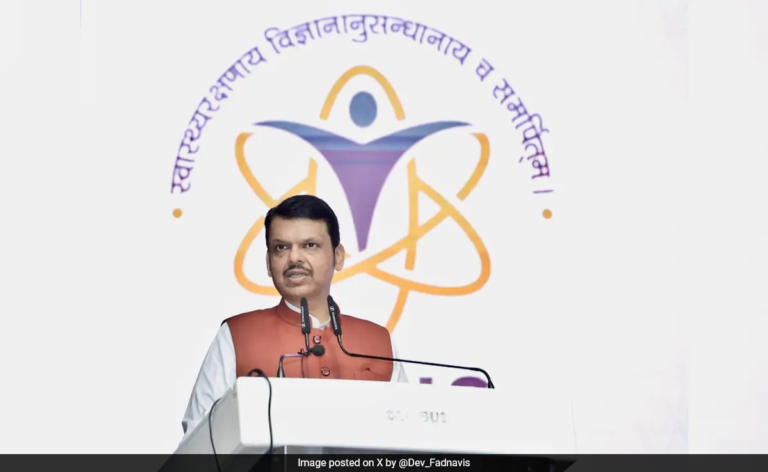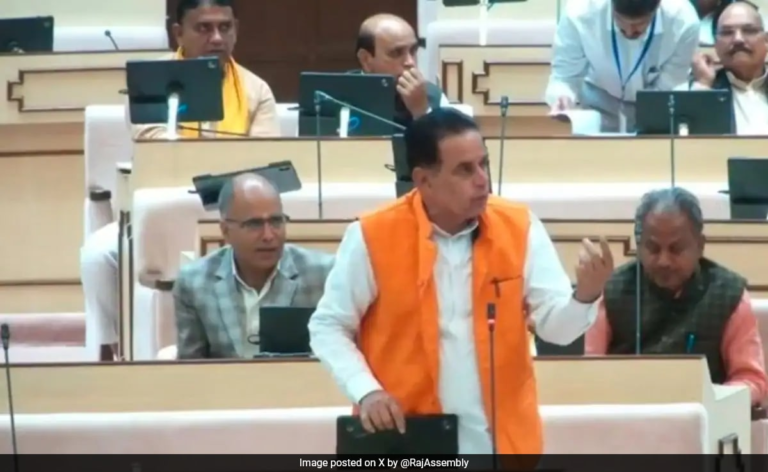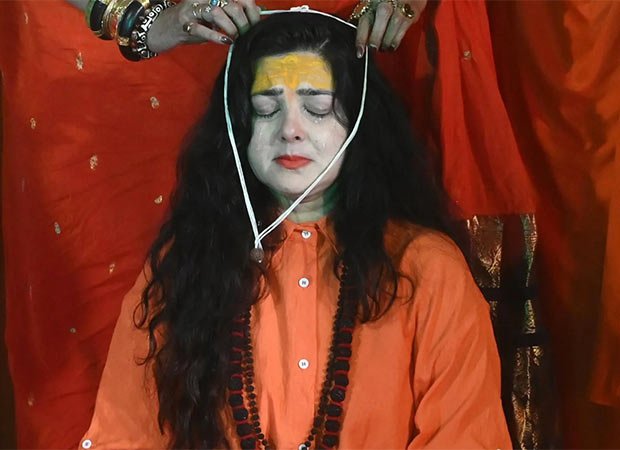

India’s only ‘Dark Sky Reserve’ tucked away in a remote part of Ladakh.
Hanle, Ladakh:
At a remote village on the Indo-China border, here ‘black is beautiful’ and darkness is celebrated! Even as India celebrates the festival of lights Diwali with gusto, there is surprise-surprise a place high in the Himalayas where night lights are hated. NDTV’s Science Editor Pallava Bagla had a rare visit to the country’s only ‘Dark Sky Reserve’ tucked away in a remote part of Ladakh. Here the local villagers who also act as astro-ambassadors show the beauty of the stars to tourists using modern telescopes and hence abhor light pollution.
“This Dark Sky Reserve fascinates the stargazers,” asserts Dr Jitendra Singh, Minister of State in the Prime Minister’s Office and India’s Science Minister who adds, that Ladakh is “India’s youngest Union Territory, but it is also India’s oldest civilization.”
He is requesting Prime Minister Narendra Modi to visit the unique project and see the huge Himalayan Chandra Telescope situated atop Mount Saraswati at 4,500 meters altitude which is a unique Himalayan sangam of many science institutions.
The Hanle Dark Sky Reserve (HDSR) is a science-based socio-economic development project, that aims to preserve the darkness of the night sky through various measures to curb light pollution, coupled with an astro-tourism program wherein local villagers have been provided telescopes and trained to be astro-tourism guides or HDSR Astronomy Ambassadors, thereby earning revenue for the local community says IIA.
Spearheading the move to create the dark sky reserve was Professor Annapurni Subramaniam and her team from the Indian Institute of Astrophysics (IIA), Bengaluru who says “Hanle is India’s gateway to the Universe and the Hanle Dark Sky Reserve is a unique science-driven sustainable development project of Ladakh.”
This celebration of darkness is more about science and has nothing to do with religion in this region largely dominated by Buddhists. Incidentally, the Hanle Village of 300 people even in 2024 is not connected to the electricity grid and is still powered by diesel generating sets or as the astronomical observatory which is powered by large solar arrays.
According to IIA, the region around Hanle, in Ladakh has one of the darkest skies in India. Due to its superior sky conditions, it is home to the Indian Astronomical Observatory (IAO) of the Indian Institute of Astrophysics (IIA, Bengaluru). A region of roughly 22 km radius around Hanle, inside the Changthang Wildlife Reserve, is declared as the Hanle Dark Sky Reserve (HDSR). HDSR is the first dark sky reserve in the country.
According to IIA, the key component of HDSR is astro-tourism, which is an upcoming area globally. 18 telescopes have been have been handed over to local volunteers, who are trained to operate them. HDSR is advertised as a tourism destination to enjoy the dark skies, and the increased tourism influx, along with employment as astro-tourism guides, will lead to socio-economic development. To preserve these dark skies for continued progress in astronomy research, HDSR is also providing light management equipment like thick curtains, warm light bulbs, and lamp shades, among other things to the villagers to reduce light spillover that interferes with the telescopes. Inside the HDSR, there are restrictions on outdoor lights in villages and only low-beam headlights of passing vehicles are permitted, all to preserve the darkness of the Hanle sky.
Mr Kesang Dorjey, Astro-ambassador and owner of Hanle Lodge, a homestay in the Hanle village, says “One needs dark skies to view the beauty of stars and the Milky Way and the telescopes gifted by the government are aiding in sustainable tourism”.
Astro-tourism is becoming popular globally and HDSR will promote this new venture within its borders. Tourists will visit and stay in Hanle to enjoy the night sky. They will be shown celestial objects through telescopes by the local villagers who are trained in astronomy. The resulting growth of astro-tourism will provide sustainable socio-economic development for the region. In addition, the reduced outdoor lights will help preserve skies for astronomy research as well.
Mr Sajad Hussain, the Chief Conservator of Forests in Ladakh says, “Today only an executive order has been passed to create the Hanle Dark Sky Reserve.”
The dark skies are also helping the local flora and fauna to prosper. Maybe in the long run an amendment needs to be made to India’s conservation laws to give statutory strength to the unique dark sky reserve projects, he adds.
Recently a unique “Star Party” was organised at Hanle, attracting many passionate amateur astronomers.
“This Star Party is yet another way in which HDSR brings together the cosmos and the people who love the night sky. We are especially delighted that, through the HDSR project, the observatory has been connecting with the local communities in a substantial and meaningful fashion,” Dr Subramaniam added.
Applauding this people’s science initiative is Shri Nawang Choszanh, Head Lama, Hanle Monastery and an astro-ambassador who says “light pollution needs to be minimised to enjoy the star spangled skies of Hanle”.




